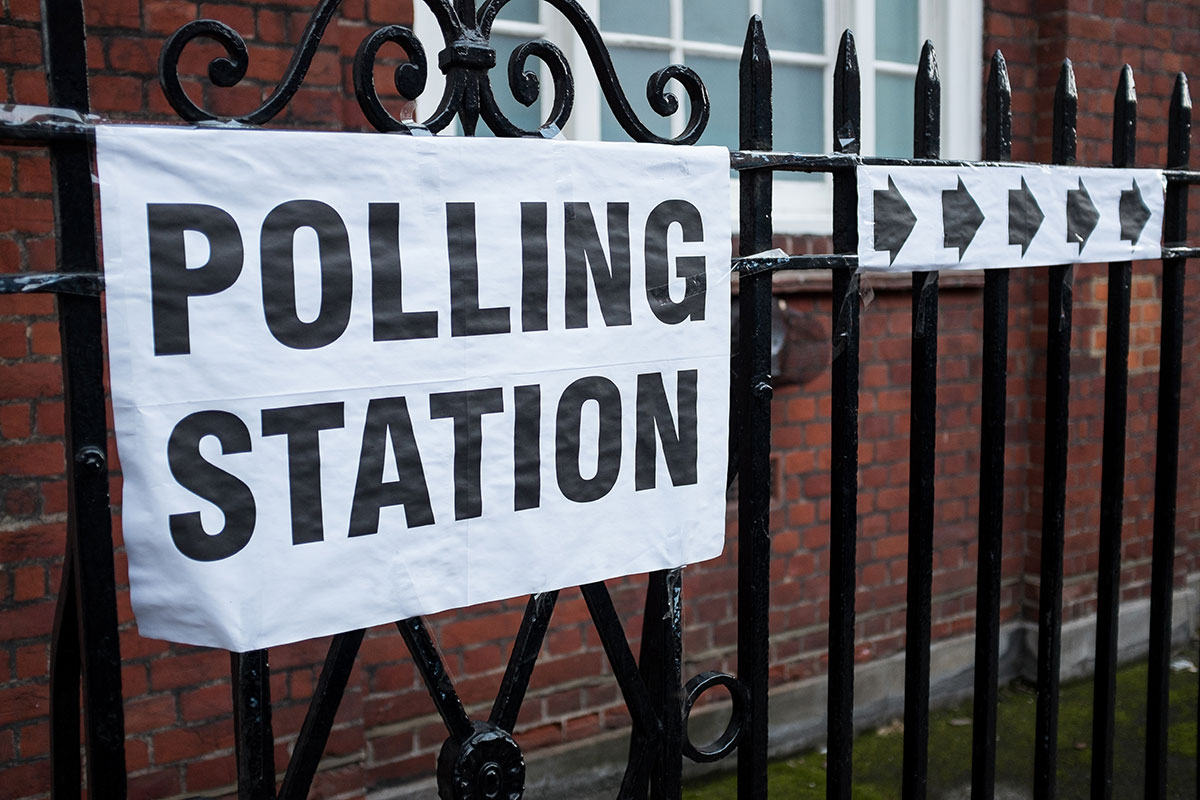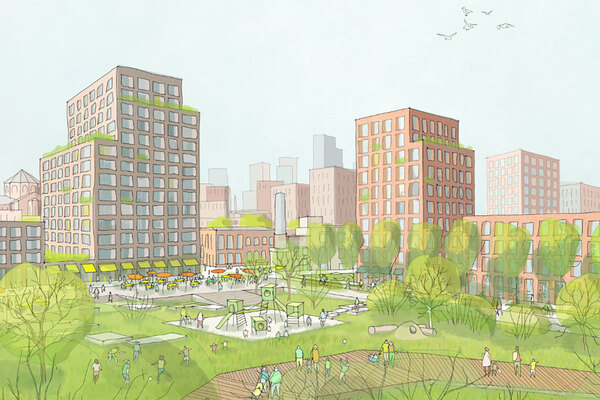 Jules Birch
Jules BirchHousing has clearly moved down the Conservatives’ list of priorities
Boris Johnson’s manifesto shows a poverty of ambition, argues Jules Birch
A Conservative election manifesto with little new to offer signals that housing has moved a long way down the party’s list of priorities.
The contrast between the Labour manifesto plan for 150,000 council and housing association homes a year and the Lib Dem manifesto promise of 100,000 homes for social rent a year could hardly be starker.
The Tory document launched by Boris Johnson does have three pages on housing but the only new policies in it had already been launched in separate announcements earlier in the campaign.
These include encouraging a new market for long-term fixed-rate mortgages to slash the costs of deposits, a First Home scheme of homes at a 30% discount in perpetuity for local families, and a stamp duty surcharge on overseas buyers to fund more help for rough sleepers.
Even these are not strictly speaking new: long-term fixed rates were encouraged by Gordon Brown but never took off; David Cameron promised 200,000 Starter Homes at a discount but none were ever built and the new scheme seems to involve only 19,000 homes by the mid-2020s; and Theresa May proposed exactly the same levy on overseas buyers last year before it was watered down.
There are also some important restatements of existing commitments: the fact that promises to end the benefit freeze, publish a Social Housing White Paper, renew the national affordable housing programme and end rough sleeping in the next parliament are there in black and white in the manifesto should give extra confidence that a Conservative government would deliver on them.
Similarly, the party reiterates that it would ban the sale of new leasehold homes (which I assume means houses) and restrict ground rents to a peppercorn.
And it promises private renters a better deal by abolishing no-fault evictions and introducing a “lifetime deposit” while also telling “good landlords” that “we will strengthen your rights of possession”.
However, there are no new commitments on fire safety and nothing to address the huge issues facing residents of buildings with non-aluminium composite material cladding or get a grip on a cladding crisis that continues to intensify.
Despite that promise to end the benefit freeze, there is no explicit commitment to restore the Local Housing Allowance to the 30th percentile of local rents.
And, while there are few specifics, there are two important changes of housing emphasis in the manifesto language.
First, it confirms a switch back to traditional Tory priorities on tenure by saying that “we must also rebalance the housing market towards more homeownership”.
Second, the party seems to have subtly changed its tune on what has been its central message about building new homes.
The 2017 manifesto was explicit that building enough new homes was the key to fixing the dysfunctional housing market and making homes more affordable – on top of the existing target of a million new homes by 2020 it added a new one of another half a million by 2022. That was subsequently upgraded to an average of 300,000 a year by the mid-2020s.
The 2019 version has milder language about existing delivery still not being enough and adds that this is why “we will continue our progress towards” that 300,000 target.
It goes on: “This will see us build at least a million more homes, of all tenures, over the next parliament – in the areas that really need them.”
“However, there are no new commitments on fire safety and nothing to address the huge issues facing residents of buildings with non-aluminium composite material cladding”
“At least a million” is of course only 200,000 new homes a year – when there were 241,000 additional dwellings provided in 2018/19. Why so coy?
And that “in areas that really need them” looks like a nod to local Tories who would prefer none at all to be built in their backyards.
There is a rather curious section on the Right to Buy. The Tories would “evaluate new pilot areas” for the voluntary housing association scheme following the pilot in the Midlands and (perhaps significantly) there is no manifesto commitment on the right to shared ownership.
The only really new things I can see from the party on housing are not in the manifesto itself but in the costings document that was published alongside it.
This reveals plans for a Social Housing Decarbonisation Fund worth £60m in 2021/22, £240m in 2022/23 and £410m in 2023/24. A footnote adds that it will total £3.8bn over a 10-year period.
There are already plans for a similar fund in Scotland but this is the first reference I’ve seen to one in England. Even if the funding looks like only a fraction of the likely cost, it is more confirmation that decarbonisation will be one of the key housing issues of the next decade.
The costings document also includes plans for Homes Upgrade Grants worth £1.4bn between 2021/22 and 2023/24 and £2.5bn over the next 10 years.
I’m assuming this would apply to privately owned homes and is the funding to implement the housing part of the manifesto’s commitment to £9.2bn of investment “in the energy efficiency of homes, schools and hospitals”.
These are perhaps hints of what would have been in the Budget and Spending Review that never happened before the election but it seems strange that these promises did not make it into the manifesto itself – perhaps because the Tories feared questions about who will bear the costs for homes that do not qualify for grants.
“It’s hard to avoid the impression of a party determined to do no more than look like it is addressing the structural crises in homelessness, social housing, fire safety and homeownership”
And, with commitments like that on existing social housing, you have to wonder how much extra money would be available for new homes in a future Spending Review.
All this is in the context of a manifesto that seems designed to focus attention on the Tories’ core messages and avoid too many specifics that could alienate voters.
But it’s hard to avoid the impression of a party determined to do no more than look like it is addressing the structural crises in homelessness, social housing, fire safety and homeownership.
That is entirely in keeping with its failure to propose a long-term solution for social care despite Mr Johnson’s promise to fix it “once and for all with a clear plan we have prepared”.
By contrast, Labour’s manifesto sets out a programme that stands more chance of addressing those structural crises than anything proposed in the past 40 years.
It goes even further than the 2017 manifesto with plans for 150,000 social and affordable homes a year built by councils and housing associations.
If that sounds radical, it is only a recognition of the scale of the unmet housing need identified by Shelter’s Social Housing Commission earlier this year.
As Labour’s John Healey told the Huffington Post, provision at that sort of scale would mean social homes not just for the poorest but also for people on ordinary incomes. For the first time in more than 40 years, Nye Bevan’s “living tapestry of a mixed community” would be back on the agenda.
With a £1bn fire safety fund, more announcements on homes for key workers and a charter for renters made on Sunday, Labour is not finished yet.
There may be doubts about whether the party’s overall manifesto plans really stack up, but housing’s place in its priorities seems clear.
And the scale of Labour’s plans puts the poverty of Tory ambitions into true perspective.
Jules Birch, award-winning blogger
More on the general election 2019
General election 2019: Conservative housing pledges
- To build at least a million homes over the next five years
- To extend the housing association Right to Buy pilot currently being run in the Midlands to other areas
- To renew the Affordable Homes Programme in the Spring Statement
- New “First Homes”, which will be sold at a 30% discount to first-time buyers – apparently modelled on David Cameron’s Starter Homes pledge from 2015
- Continue the roll-out of Universal Credit, but "do more make sure that it works for the most vulnerable"
- To ensure infrastructure, such as GPs and schools, is provided before new housing is built
- To give local communities the power to write design standards
- A continued commitment to Theresa May’s promise to end ‘no-fault’ evictions
- A new market for “lifetime” fixed-rate mortgages, which will come with 5% deposits
- “Lifetime” deposits for the private rented sector, allowing renters to move the same deposit to a new tenancy when moving home
- A Social Housing White Paper, which was originally due in Spring 2019
- To simplify shared ownership by setting a single standard for all housing associations
- An “accelerated” green paper on planning, aimed at speeding up the planning process
- Reforming the Housing Infrastructure Fund to provide greater flexibility to Homes England











